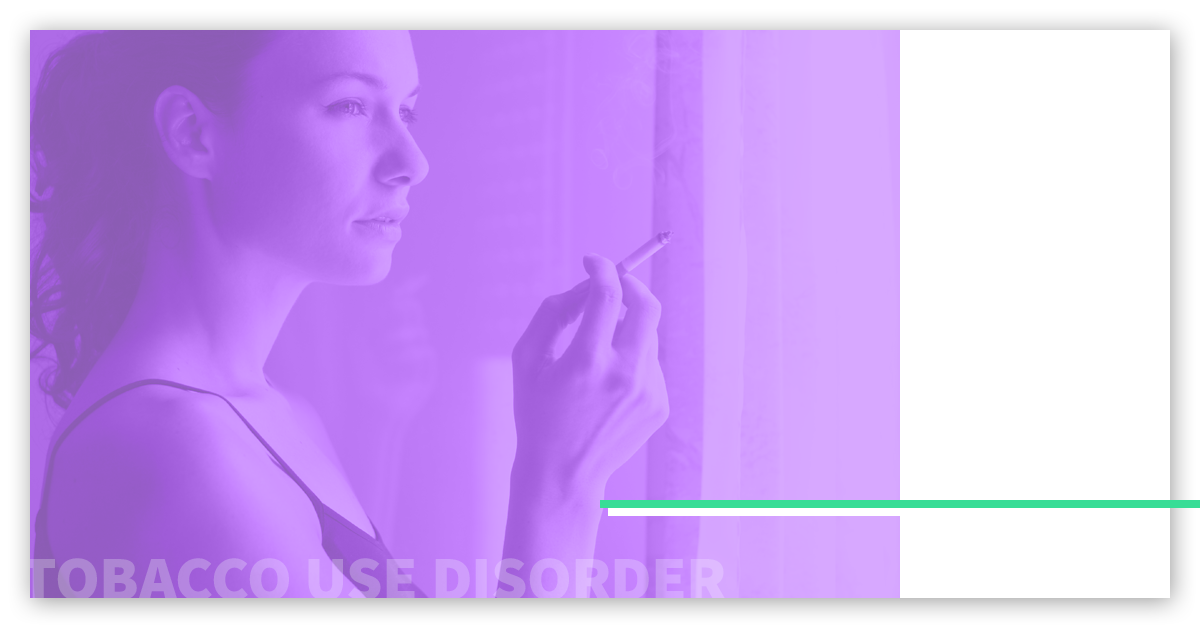What is Tobacco Use Disorder?

LISTEN TO THIS ARTICLE:
Nicotine, in all its forms, is the most widely abused drug in the U.S. It is hard to overstate the addictive power of nicotine. Large, long term studies reveal that 27% of people who had ever tried smoking went on to develop Tobacco Use Disorder. Furthermore, almost 80% of smokers are daily smokers, and these people are most likely to meet criteria for Tobacco Use Disorder.
Because tobacco use is legal and tolerance develops rapidly, overdose or intoxication, as well as legal consequences, are very uncommon. Rather, Tobacco Use Disorder leads people to self-sequester. They avoid the ever-growing number of places where tobacco is prohibited, especially if they are chain smokers. The number of cigarettes or packs smoked daily and lag time from waking up to the day’s first cigarette are the most powerful indicators of severity.
Despite how common tobacco use is, there is no healthy amount. Even light smoking poses measurable health risks. Tobacco use is the number one preventable cause of death in the U.S., and its health consequences take 480,000 lives annually. Tobacco negatively affects almost every system of the body. It increases the risk of several types of cancer – esophagus, throat, mouth, bladder, pancreas, kidney, cervix, and most of all lung, increasing that risk 25 times. Smoking is the source of 1 in 3 cancer deaths.
Smoking raises the risks of heart disease and stroke 2-to-4 times, significantly aggravates asthma, and causes Chronic Obstructive Pulmonary Disease (which encompasses emphysema and chronic bronchitis). It worsens diabetes, damages the eyes, impairs erectile function, increases respiratory infections, causes gum disease, stains teeth, and wrinkles skin. Aside from these direct effects, secondhand smoke contributes to thousands of heart disease and lung cancer deaths every year in non smokers.


 Learn
Learn ID Symptom
ID Symptom Find Help
Find Help